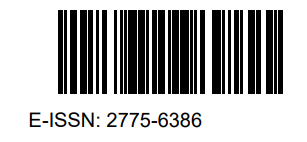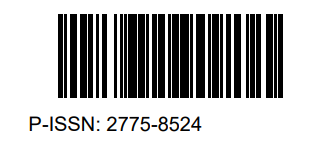THE ROLE OF INFLUENCERS IN THE DISSEMINATION OF NEW VOCABULARY
DOI:
https://doi.org/10.33477/lingue.v7i1.9490Keywords:
influencer, new vocabulary, social media, slang, young generationAbstract
The purpose of this study is to examine the role of influencers in the dissemination of new vocabulary through social media. This research employs a qualitative research method involving social media content analysis and literature review. The study focuses on the mechanisms of new vocabulary dissemination and its impact on social communication and the development of the Indonesian language. The findings reveal that influencers utilize social media platforms such as Instagram, TikTok, and YouTube to create engaging and relevant content. Creative content in the form of short videos, memes, or interactive stories is often used to introduce new terms. Examples of vocabulary such as "Santuy," "Asyiap," and "Mager" have gained popularity through these platforms. Social media algorithms accelerate the spread of terms by increasing the visibility of content with high interaction. Additionally, direct interactions with followers through live broadcasts or Q&A sessions strengthen the emotional connection between influencers and their audience, facilitating the adoption of new vocabulary. The impact of this phenomenon is the enrichment of colloquial language, the creation of group identity, and the strengthening of relationships within digital communities. This phenomenon has also changed perceptions of the formality of the Indonesian language, with an increasing use of non-standard terms in various contexts, including in marketing. Some companies have even started adopting new vocabulary in their branding strategies. The contribution of this study can serve as a guide for educators and policymakers to understand the dynamics of language development among the younger generation, as well as to design language learning strategies that are more relevant to the language evolving on social media.
References
Afandi, Y. (2019). Gereja dan Pengaruh Teknologi Informasi “Digital Ecclesiology.” Fidei: Jurnal Teologi Sistematika dan Praktika, 1(2), 270–283. https://doi.org/10.34081/270033
Amalia, S., Jumadi, & Dewi, D. W. C. (2023). Analisis Peran Instagram dalam Menyebarkan Kosakata Baru dalam Bahasa Indonesia di Era Digital. Argopuro: Jurnal Multidisiplin Ilmu Bahasa, 1(4), 1–14. https://ejournal.warunayama.org/index.php/argopuro/article/view/1107
Annisa, F. N., Sumarwati, S., & Rohmadi, M. (2022). Kosakata Baru pada Pemberitaan Tentang Pandemi Covid-19 dan Pemanfataannya dalam Pembelajaran Bahasa Indonesia di SMP. Hasta Wiyata, 5(2), 154–164. https://doi.org/10.21776/ub.hastawiyata.2022.005.02.06
Ansari, J. A. N., & Khan, N. A. (2020). Exploring the role of social media in collaborative learning the new domain of learning. Smart Learning Environments, 7(6), 1–9. https://doi.org/10.1186/s40561-020-00118-7
Bangun, M. A., Nasution, M. F. A., Sinaga, N. R., Sastra, S. F. D., & Khairani, W. (2024). Analisis Pengaruh Media Sosial Terhadap Perkembangan Bahasa Indonesia di Era Globalisasi.JurnalBahasaDaerahIndonesia,1(3), 9.
https://doi.org/10.47134/jbdi.v1i3.2646
Beemt, A. Van Den, Thurlings, M., & Willems, M. (2020). Towards an understanding of social media use in the classroom : a literature review. Technology, Pedagogy and Education, 29(1),55. https://doi.org/10.1080/1475939X.2019.1695657
Desrina, I. (2024). Peran Media Sosial dalam Pembentukan Gaya Bahasa Remaja: Studi Literatur tentang Bahasa Gaul dan Adaptasinya dalam Bahasa Indonesia. Indonesian Research Journal on Education Web:, 4, 550–558. https://doi.org/10.31004/irje.v4i4.1418
Dwiyanto, T. (2024). Peran Dan Fungsi Influencer Di Media Sosial. Jurnal Bisnis dan Ekonomi, 2(1), 1–16. https://doi.org/10.61597/jbe-ogzrp.v2i1.16
Febriana, Ika, Simamora, Enjelika, Eva, Ulina Br Hombing, Karin Sarah Angelina Siahaan, Kaiesa Raihatul Muntaza, M. E. M. (2024). Penyerapan Bahasa Gaul Dalam Bahasa Indonesia pada Iklan dan Pemasaran Produk. September, 2791–2797.
Juwita, E. P., Budimansyah, D., & Nurbayani, S. (2015). Peran Media Sosial Terhadap Gaya Hidup Siswa. SOSIETAS, 5(1), 1–8. https://doi.org/10.17509/sosietas.v5i1.1513
Kembuan, E. M., & Irwansyah. (2019). Peran teknologi audio - visual dalam pengembangan pembelajaran anak di sekolah dasar Karya Anak Bangsa di Manado. Polyglot: Jurnal Ilmiah, 15(1), 73- 92. https://doi.org/10.19166/pji.v15i1.1311
Laurensia Ndraha, Destin Elsa Putri Ginting, A. K. H. (2024). Pengaruh Media Sosial Terhadap Perkembangan Bahasa Gaul di Kalangan Remaja Gunungsitoli. IMEIJ, 5, 3610–3616. http://repository.iftkledalero.ac.id/657/%0Ahttp://repository.iftkledalero.ac.id
/657/5/BAB IV - DAFTAR PUSTAKA.pdf.
Lestari, P. P. (2020). Dakwah Digital Untuk Generasi Milenial. Jurnal Dakwah, 21(1), 41–58. https://doi.org/10.14421/jd.2112020.1
Liputan6. (2024). Kosakata Baru Adalah: Pengertian, Jenis, dan Cara Mempelajarinya. Liputan6.
https://www.liputan6.com/feeds/read/5783893/kosakata-baru-adalah- pengertian- jenis-dan-cara-mempelajarinya
Luthfi, M., Kholil, S., Lubis, L., & Tamrin Sikumbang, A. (2022). The Utilization of Religious Content in Social Media for the Alteration Adolescent’s Islamic Behaviour. Dialogia, 20(2), 460–
481. https://doi.org/10.21154/dialogia.v20i2.4838
Maulana, I., Manulang, J. M. br., & Salsabila, O. (2020). Pengaruh Social Media Influencer Terhadap Perilaku Konsumtif di Era Ekonomi Digital. Majalah Ilmiah Bijak, 17(1), 28–34. https://doi.org/10.31334/bijak.v17i1.823
Nisa, R. R. (2019). Pengaruh sosial media influencer dan trushworthiness terhadap keputusan pembelian kosmetik make over (di Royal Plaza). Jurnal Pendidikan Tinggi Tataniaga (JPTN), 7(2), 479-482. Retrievedfromhttps://jurnalmahasiswa.unesa.ac.id/index.php/jptn/article/view/30171/27649.
Novarizal, R. (2022). Social Media Influencer dan Kebiasaan Berbahasa. Kumparan.https://kumparan.com/rezanovarizal21/1yKevSWLd2m?utm_sou rce=Mobile&utm_mediu m=wa&shareID=W6DMzxptbtkZ
Pujiono, A. (2021). Media Sosial Sebagai Media Pembelajaran Bagi Generasi
Z. Didache: Journal of Christian Education, 2(1),
1. https://doi.org/10.46445/djce.v2i1.396
Samodra, F. P. (2024). Arti Kata Babayo dan Kosakata Lain yang Juga Viral di Media Sosial. Liputan6. https://www.liputan6.com/hot/read/5496455/arti-kata-babayo-dan- yang-kosakata-lain- juga-viral-di-media-sosial?page=3
Sanita, M. (2023). Benarkah “Typing Ganteng” Sebagai Identitas dan Perjalanan Gen Z di Media Sosial. Universitas Islam Indonesia. https://communication.uii.ac.id/tag/tiktok/
Syarifuddin, K. T., & Hafid, A. (2018). Pembentukan Kosakata Baru Sebagai Bentuk Coinage dalam Media Sosial Instagram. Jurnal Kajian Bahasa, Sastra Dan Pengajaran (KIBASP), 2(1), 686.https://doi.org/10.31539/kibasp.v2i1.450
Purbohastuti, Arum Wahyuni. (2017). Efektivitas Media Sosial sebagai Media Promosi. Ekonomika, 12(2), 212–231.
TEMPO. (2022). Mengenal Apa dan Siapa Influencer. TEMPO. https://www.tempo.co/digital/mengenal-apa-dan-siapa-influencer
Wardana, B. W. P., & Atiqa Sabardila. (2022). Ragam Bahasa Gaul dalam
Caption Akun Instagram Beauty Influencer @cindercella dan Dampaknya terhadap Eksistensi Bahasa Indonesia. Jurnal Onoma: Pendidikan, Bahasa, Dan Sastra, 8(1), 112–122. https://doi.org/10.30605/onoma.v8i1.1615
Waruwu, L., Zai, S. B., Tafona’o, S. P. K., & Harefa, A. H. (2024). Analisis Pengaruh Penggunaan Media Sosial Terhadap Perkembangan Bahasa Indonesia Pada Siswa SMP. Journal on Education, 7(1), 3115–3122. https://doi.org/10.31004/joe.v7i1.6680
Watie, E. D. S. (2016). Komunikasi dan Media Sosial (Communications and Social Media). Jurnal The Messenger, 3(2),
69. https://doi.org/10.26623/themessenger.v3i2.270
Yuliana, S. (2018). "Bahasa Gaul di Era Digital: Studi Sosiolinguistik pada Pengguna Media Sosial." Jurnal Ilmu Bahasa dan Komunikasi, 10(3), 112-
128. https://irje.org/index.php/irje
Yulia, Agustina, I., Amalia Hidayat, N., & Novianti, F. (2024). The Existence of Gus Iqdam’s Dakwah In the Spiritual Preferences of The Young Generation. International Conference on Muslim Society and Thought, 268–280. https://doi.org/10.15642/ICMUST.2024.4.1679
Downloads
Published
How to Cite
Issue
Section
License
If accepted for publication, the copyright of the article belongs to the author. Copyright includes the exclusive right to reproduce or transmit manuscripts in any form and media: reprint, produce photographs, microfilm, or translated versions of the manuscript. Increasing parts of this journal, storage and transmission of databases of any form or media, such as electronic copies, electrostatic and mechanical copies, photocopies, recordings, magnetic media and so on are permitted without permission. LINGUE: Jurnal Bahasa, Budaya dan Sastra, allow readers to read, download, copy, distribute, print, search, or link the fulltext of its articles and allow readers to use them for any other lawful purpose. However, it can not be used for commercial purposes
Jika diterima untuk publikasi, hak cipta artikel adalah milik penulis. Hak Cipta mencakup hak eksklusif untuk mereproduksi atau mengirimkan manuskrip dalam bentuk dan media apa pun: mencetak ulang, menghasilkan foto, mikrofilm, atau versi terjemahan dari manuskrip tersebut. Memperbanyak bagian jurnal ini, penyimpanan dan transmisi database dalam bentuk atau media apa pun, seperti salinan elektronik, salinan elektrostatis dan mekanis, fotokopi, rekaman, media magnetis, dan sebagainya diizinkan tanpa izin. LINGUE: Jurnal Bahasa,Budaya dan Sastra, memungkinkan pembaca untuk membaca, mengunduh, menyalin, mendistribusikan, mencetak, mencari, atau menautkan teks lengkap artikelnya dan memungkinkan pembaca untuk menggunakannya untuk tujuan yang sah lainnya. Namun, tidak dapat digunakan untuk tujuan komersial

LINGUE : Jurnal Bahasa, Budaya, dan Sastra Ciptaan disebarluaskan di bawah Lisensi Creative Commons Atribusi-TanpaTurunan 4.0 Internasional.







